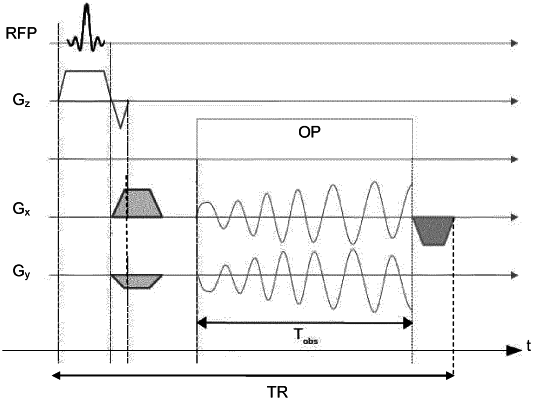| CPC A61B 5/055 (2013.01) [G01R 33/4824 (2013.01); G01R 33/561 (2013.01)] | 6 Claims |

|
1. A method of performing magnetic resonance imaging of a body comprising the steps of:
a) immerging the body (BD) in a static and substantially uniform magnetic field (BO), called longitudinal field oriented along a direction (z), called longitudinal direction;
b) transmitting to said body a plurality of radio-frequency pulse (RFP) adapted for exciting nuclear spins inside said body;
c) after each said radio-frequency pulse, applying to said body a time-varying magnetic field gradient (Gx, Gy) defining a respective non-parametric trajectory (ST) in a k-space and simultaneously acquiring samples of a magnetic resonance signal emitted by the excited nuclear spin, each sample corresponding to a point (Ki, KS) of the k-space belonging to said trajectory, wherein the points of the k-space corresponding to the samples define a pseudo-random sampling of the k-space, following a predetermined sampling density; and
d) applying a sparsity-promoting nonlinear reconstruction algorithm to the acquired samples for reconstructing a magnetic resonance image of said body, said image being formed by a two-dimensional, three-dimensional or four-dimensional array of pixels;
the number of non-parametric trajectories in the k-space, each following a respective radio-frequency pulse, along which said samples are acquired, being lower than the number of pixels or voxels along one direction of said array;
wherein
a number of samples along each of said trajectories exceeds a number of pixels along at least one dimension of said array; and in that:
at least in a central region of the k-space, the distance (Δk) between any two adjacent points belonging to a same trajectory is lower than 1/FOV, FOV being a size of a field of view of the reconstructed image of the object.
|